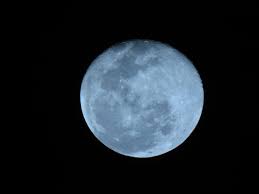Worldsfeed News Desk:This week, on Wednesday, August 30, there will be a significant lunar event known as the “Super Blue Moon,” which is the result of a combination of factors. This term was coined by an astrologer and is not a part of mainstream astronomy. The astrologer defined it as a full moon that happens when the moon is at or near its closest point to Earth in its orbit (perigee), within 90 percent of this distance.
At around 12 noon ET on August 30, the moon will reach perigee, coming closest to Earth at a distance of about 221,942 miles (357,181 km) away. Then, about 9 hours and 36 minutes later, the moon will officially become full. Although a full moon technically only lasts for a moment, this moment is so brief that it appears full to our eyes for about a day before and after. This is because the change in the apparent width of the shaded strip (the transition from illuminated to shadowed parts) happens very slowly, making it hard to notice the exact moment it becomes full.
This particular full moon is also special because it’s the second full moon in the month of August. The first one occurred on August 1. When there are two full moons in a single month, the second one is often referred to as a “Blue Moon.” So, this event on August 30 will be called a “Super Blue Moon.” However, despite the term “Blue,” the moon won’t actually appear blue; it will look its usual yellow-white color unless there are unusual airborne particles like dust, ash, or smoke affecting its appearance.
The mainstream media tends to create a lot of excitement around such events, so many people might be looking forward to observing this large late summer moon. If you’re interested in observing it, you might consider using binoculars for a wider view of the lunar surface, or if you want to examine the moon’s features up close, you could explore using telescopes. There are guides available to help you choose the right optics for your preferences.


0 Comments